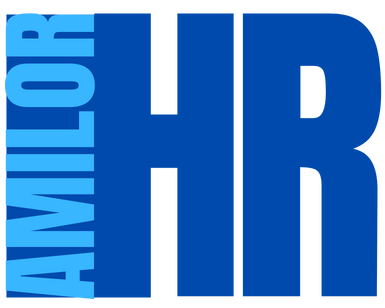Desktop publishing, a contraction of publishing and information technology, is changing the way companies manage documents. This innovative technique encompasses a range of tools and methods designed to optimize the production, distribution and archiving of personalized documents. Let’s delve into the interesting world of desktop publishing to understand its ins and outs.
Definition and fundamentals of desktop publishing
Desktop publishing (DTP ) refers to the set of processes and technologies used to design, produce and distribute personalized documents on a large scale. This discipline applies to various types of documents, such as :
- Invoices
- Contracts
- Bank statements
- Pay slips
- Administrative correspondence
The fundamental principle of desktop publishing is theautomation of document processes. It aims to simplify the management of information flows, reduce repetitive tasks and improve the overall efficiency of corporate communication. By combining advanced technologies and proven methodologies, desktop publishing enables organizations to increase productivity while maintaining a high level of personalization.
Desktop publishing is based on several key technological components:
- Content management systems: to organize and structure information
- Page layout software: to create attractive document templates
- Personalization tools: to adapt each document to the recipient’s specific needs
- Multi-channel distribution solutions: to distribute documents via different media (paper, email, web)
These technologies converge to form a coherent ecosystem, capable of processing huge volumes of data and producing tailor-made documents in record time.
The challenges and benefits of a high-performance desktop publishing solution
The adoption of a high-performance desktop publishing solution represents a strategic challenge for many companies, particularly those generating large volumes of customer documents. The benefits of such an approach are manifold, and have a direct impact on the organization’s operational and financial performance.
Here’s an overview of the main benefits offered by desktop publishing:
| Benefits | Description |
|---|---|
| Productivity gains | Automate repetitive tasks, reduce processing times |
| Cost savings | Optimized processes, fewer errors and fewer reprints |
| Increased personalization | Fine-tune documents to recipients’ profiles and preferences |
| Omnichannel communication | Consistent distribution across all channels (paper, digital, mobile) |
| Regulatory compliance | Easier compliance with legal standards and obligations |
Document personalization is a major challenge for modern desktop publishing. It enables a closer relationship to be established with customers, by providing them with communications that are perfectly adapted to their situation. This tailor-made approach strengthens customer commitment and enhances the effectiveness of marketing and sales initiatives.
Cost optimization also represents a significant benefit. By streamlining document production processes, companies make substantial savings on printing, postage and administrative management. Reducing errors and reprints also contributes to cost control.

From traditional desktop publishing to CCM (Customer Communication Management)
Changes in technology and consumer expectations have led to the emergence of Customer Communication Management (CCM), a more global approach to managing customer communications. CCM encompasses and goes beyond the concept of traditional desktop publishing by integrating all communication channels, beyond the simple paper medium.
CCM is characterized by several key features:
- 360° view of the customer: taking into account all interactions and preferences
- Advanced personalization: adaptation of content, tone and communication channel
- Increased interactivity: creation of dynamic, responsive documents
- Data analysis: use feedback to optimize future communications
This move towards CCM responds to new market demands for responsive and relevant communications. Companies adopting this approach benefit from a better understanding of their customers, enabling them to fine-tune their relationship strategy.
The shift from desktop publishing to CCM is accompanied by new technological trends:
- Integration of multimedia content into documents
- Adaptive document design (responsive design)
- Use of artificial intelligence to personalize communications
- Implementation of complex validation workflows
These innovations enable companies to create unique and memorable customer experiences, similarly strengthening their competitive position in increasingly demanding markets.
The key phases of an effective desktop publishing approach
Implementing a successful desktop publishing strategy involves several distinct phases, each of which plays a crucial role in optimizing document processes. Understanding these stages enables organizations to structure their approach and maximize the benefits of desktop publishing.
The main phases of a desktop publishing approach are :
- Design: development of document templates and definition of personalization rules
- Production: automated document generation from customer data
- Distribution: distribution of documents via the appropriate channels (paper, email, web portal)
- Archiving: secure storage and indexing of documents to facilitate future consultation
The design phase is particularly critical. It requires close collaboration between business, marketing and IT teams to create document templates that are both aesthetically pleasing, functional and compliant with corporate standards. The use of specialized software facilitates this stage by offering intuitive design tools and advanced personalization functionalities.
Production represents the operational heart of desktop publishing. It relies on automated systems capable of processing large volumes of data to generate personalized documents in real time. This phase requires a robust IT infrastructure and well-defined processes to guarantee the quality and consistency of the documents produced.
Multi-channel distribution has become a major challenge in the digital age. Modern desktop publishing solutions must be able to adapt the format and distribution method of documents to the preferences of each recipient. This flexibility optimizes the impact of communications while complying with regulatory and environmental constraints.
Finally,archiving plays a crucial role in document lifecycle management. Desktop publishing systems integrateelectronic archiving functions that enable documents to be easily stored, indexed and retrieved. This step is essential to ensure the traceability of communications and to meet legal requirements for document retention.
By mastering these different phases, companies can take full advantage of the benefits of desktop publishing and CCM. They effectively improve their operational efficiency while offering a quality customer experience, based on relevant, personalized communications.

